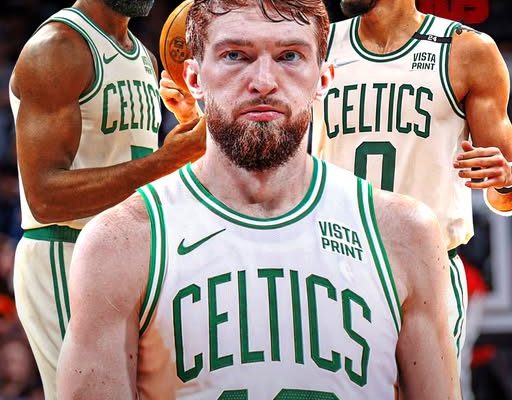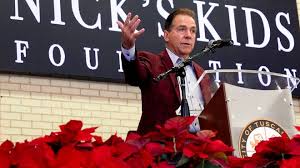The Boston Celtics have found themselves at a crossroads, facing a pivotal moment that could shape the trajectory of the franchise for years to come. With Jayson Tatum sidelined due to injury and the team still reeling from a disappointing playoff exit, conversations about the future have taken on a new urgency. The Celtics, long regarded as a powerhouse in the Eastern Conference, now find themselves exploring the possibility of a bold and transformative trade, one that could bring in a player capable of becoming the new face of the team. Among the names being floated, Domantas Sabonis of the Sacramento Kings stands out as a player who could not only fill the void left by Tatum’s absence but also serve as a cornerstone for a new era in Boston.
Sabonis, a versatile big man with a unique blend of scoring, passing, and rebounding, has emerged as one of the NBA’s most reliable and dynamic frontcourt players. His ability to operate as both a scoring threat and a playmaker sets him apart in a league that increasingly values versatility and adaptability. For the Celtics, acquiring a player of Sabonis’ caliber would not only provide an immediate boost to their lineup but also offer a long-term solution as they navigate the challenges of an uncertain future. With Tatum recovering and questions surrounding the overall health and consistency of the roster, the idea of building around Sabonis has started to gain momentum among analysts and fans alike.
The potential trade scenario involving Sabonis comes at a time when Boston is in need of both stability and star power. Following their playoff flameout, the Celtics have been scrutinized for their lack of depth, inconsistent shooting, and overreliance on Tatum and Jaylen Brown to carry the offensive load. While Brown remains a formidable talent and a cornerstone in his own right, the absence of Tatum has revealed just how vulnerable Boston can be when one of their stars is out of the equation. Sabonis, with his ability to contribute in multiple facets of the game, could help alleviate that pressure while also complementing Brown’s skill set. His presence in the frontcourt would not only provide Boston with a dependable scoring option but also enhance their ball movement and offensive flow, areas where they have struggled at times.
One of Sabonis’ greatest strengths lies in his passing ability, which is exceptional for a player of his size. Operating out of the high post or low block, he has the vision and creativity to facilitate the offense, finding cutters, spotting shooters, and initiating plays in a way that few big men can. This particular skill would mesh well with Boston’s roster, which features capable perimeter shooters and versatile wings. With Sabonis acting as a hub for the offense, the Celtics could unlock a new level of efficiency, moving away from isolation-heavy sets and embracing a more dynamic and fluid style of play. The combination of Sabonis’ interior presence and Brown’s slashing ability could prove to be a nightmare for opposing defenses, particularly when surrounded by reliable floor spacers.
Defensively, while Sabonis is not known for being an elite rim protector, his high basketball IQ and relentless motor allow him to hold his own in most matchups. Pairing him with a defensive-minded big or versatile wing defenders could help mask his shortcomings on that end of the floor. Moreover, his rebounding ability is among the best in the league, which would address one of Boston’s lingering issues—controlling the glass. In key playoff moments, second-chance opportunities can often decide the outcome of games, and Sabonis’ presence would significantly bolster the Celtics’ ability to dominate the boards and create additional scoring opportunities.
The question then becomes: what would it take for Boston to land Sabonis? The Kings, who have built their identity around the dynamic duo of Sabonis and De’Aaron Fox, would likely demand a substantial return in any potential trade. This could include a package centered around draft picks, young players with upside, and possibly one of Boston’s established role players. While the Celtics’ front office, led by Brad Stevens, has been cautious about parting with key assets in the past, the urgency of the current situation might compel them to be more aggressive. After all, championship windows in the NBA are notoriously fleeting, and the opportunity to acquire a proven All-Star like Sabonis does not come around often.
Another factor to consider is Sabonis’ contract situation. With several years left on his current deal, acquiring him would give Boston some much-needed stability in their roster planning. Unlike a rental player who could leave in free agency, Sabonis represents a long-term investment, one that could pay dividends for years to come. This is particularly important given the uncertainty surrounding Tatum’s health and the ongoing evolution of the Celtics’ core. Having both Sabonis and Brown locked in as foundational pieces would allow Boston to build a more balanced and sustainable roster, one capable of competing with the elite teams in the East such as Milwaukee, Philadelphia, and Miami.
From a fan perspective, the addition of Sabonis would be met with excitement and anticipation. Known for his work ethic, team-first mentality, and competitive spirit, Sabonis embodies many of the qualities that Boston fans value in their players. His blue-collar approach to the game would resonate with the city’s passionate basketball culture, and his willingness to do the dirty work—whether it’s setting hard screens, battling for rebounds, or making the extra pass—would quickly endear him to the fanbase. For a team that prides itself on grit and determination, Sabonis feels like a natural fit.
There is also the narrative element to consider. The Celtics, one of the most storied franchises in NBA history, are always under the spotlight. Every move they make is dissected and analyzed, and the pressure to return to championship contention is constant. Bringing in a player like Sabonis would signal to the league and the fans that Boston is serious about contending, even in the face of adversity. It would be a bold move, one that could redefine the team’s identity and set the stage for a new chapter in their storied legacy.
Of course, there are risks involved. Trading for Sabonis would likely mean parting with some of the young talent and future assets that Boston has worked hard to accumulate. There is also the question of fit—while Sabonis’ skill set is undeniably valuable, integrating a new star into an established system always comes with challenges. The Celtics would need to adjust their offensive schemes and rotations to maximize his impact, and that process could take time. Additionally, the Eastern Conference is as competitive as ever, and there are no guarantees that adding Sabonis would immediately vault Boston to the top. However, the potential upside is too significant to ignore.
Looking ahead, the Celtics’ front office faces a critical decision. Do they stay the course, hoping that Tatum’s recovery and incremental improvements from their current roster will be enough to keep them in the championship hunt? Or do they take a swing for the fences, pursuing a trade for Sabonis that could reshape the franchise? It is a classic high-risk, high-reward scenario, one that could either accelerate Boston’s path back to the NBA Finals or set them back if things don’t go as planned.
What makes Sabonis particularly intriguing is that he is entering the prime of his career. At just 28 years old, he has already established himself as a multi-time All-Star and one of the most productive big men in the league. His game, which is built on skill and fundamentals rather than sheer athleticism, is likely to age well, meaning that Boston could count on him being a reliable contributor for years to come. Pairing a prime Sabonis with a fully healthy Tatum and Brown could give the Celtics one of the most formidable trios in the NBA, capable of competing with the likes of Giannis Antetokounmpo’s Bucks or Joel Embiid’s 76ers.
The timing of this trade buzz also adds an extra layer of intrigue. The Celtics are in a transition period, with their recent playoff disappointments prompting serious discussions about their direction. The front office knows that simply running it back with the same roster may not be enough, especially as other contenders in the East continue to reload and improve. In this context, the idea of acquiring Sabonis is not just about filling a temporary gap left by Tatum’s injury; it’s about taking a proactive step to ensure that Boston remains relevant and competitive in the long term.
As rumors swirl and trade scenarios are debated, one thing is clear: the Celtics cannot afford to stand still. Whether they ultimately pull the trigger on a Sabonis trade or pursue other avenues, the need for decisive action is pressing. The NBA is a league that rewards boldness, and the teams that are willing to take calculated risks often reap the biggest rewards. For Boston, the pursuit of Sabonis represents an opportunity to not only weather the storm of Tatum’s injury but also to lay the foundation for sustained success.
In the end, the prospect of Domantas Sabonis in a Celtics uniform is both tantalizing and realistic. His combination of skill, leadership, and versatility makes him an ideal candidate to help lead the team into its next chapter. While no trade is ever guaranteed to work out perfectly, the potential benefits of bringing Sabonis to Boston far outweigh the risks. For a franchise that has always aimed for greatness, this could be the kind of transformative move that changes everything. The next few months will be critical as the Celtics weigh their options and chart their path forward, but one thing is certain: the conversation around Sabonis is only just beginning.



